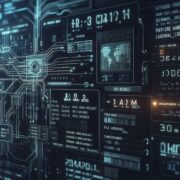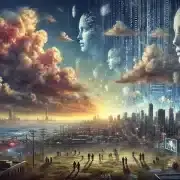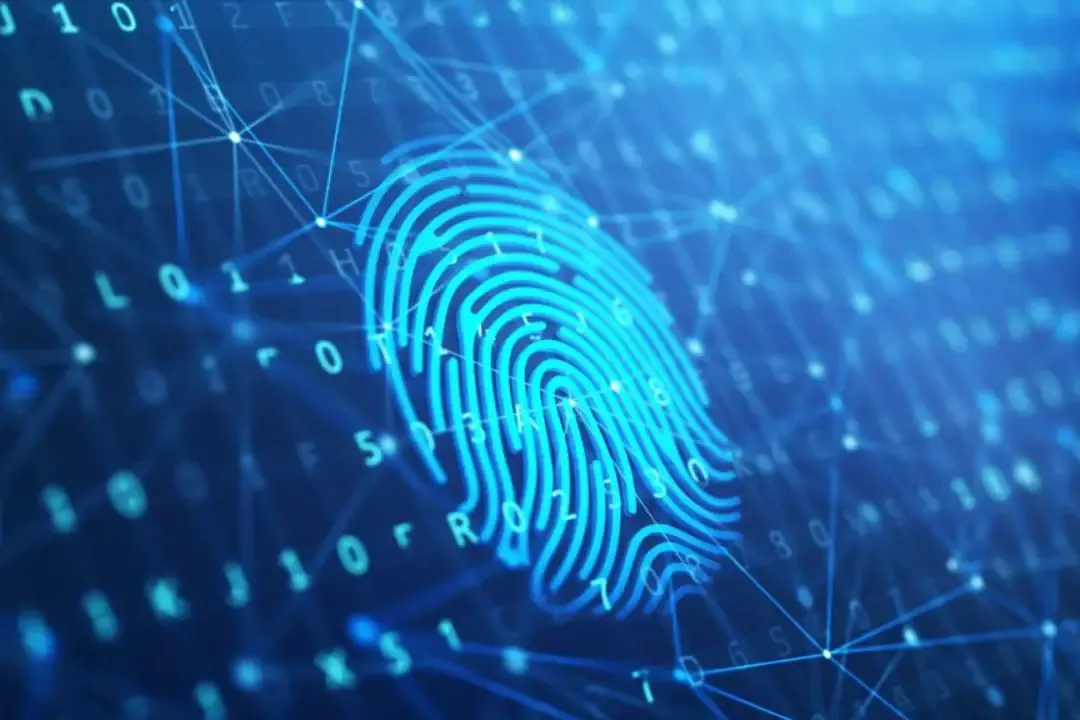Prehistoric Origins and Early Insights
In the annals of human civilization, the intricate patterns etched onto our fingertips have long captivated our curiosity. Ancient artifacts adorned with ridge-like carvings have been uncovered across diverse regions, hinting at an innate fascination with these unique markers. The earliest documented accounts can be traced back to the Qin Dynasty (221-206 BC) in China, where handprints were employed as evidence Evidence is any form of proof, such as objects, materials, or scientific findings, presented to establish or disprove a fact in a legal proceeding. It is used to reconstruct events and link or exclude individuals Read Full Definition in burglary investigations. This rudimentary application foreshadowed the profound impact of fingerprintsFingerprint, impression made by the papillary ridges on the ends of the fingers and thumbs. Fingerprints afford an infallible means of personal identification, because the ridge arrangement on every finger of every human being is Read Full Definition on identification and forensics.
Evidence is any form of proof, such as objects, materials, or scientific findings, presented to establish or disprove a fact in a legal proceeding. It is used to reconstruct events and link or exclude individuals Read Full Definition in burglary investigations. This rudimentary application foreshadowed the profound impact of fingerprintsFingerprint, impression made by the papillary ridges on the ends of the fingers and thumbs. Fingerprints afford an infallible means of personal identification, because the ridge arrangement on every finger of every human being is Read Full Definition on identification and forensics.
- Prehistoric Origins and Early Insights
- The Dawn of Fingerprint Uniqueness and Permanence
- Johann Christoph Andreas Mayer’s Groundbreaking Assertion
- Purkinje’s Pattern Classification and Welcker’s Permanence Study
- The Pioneers of Fingerprint Identification
- Sir William James Herschel: The Accidental Trailblazer
- Dr. Henry Faulds: The Meticulous Observer
- Gilbert Thompson: America’s First Civil Fingerprint Adoption
- The Rise of Fingerprint Classification Systems
- Alphonse Bertillon and the Anthropometric System
- Sir Francis Galton: The Pioneering Statistician
- Juan Vucetich and the Argentine Pioneers
- The Fingerprint Renaissance: Adoption and Advancement
- The Bertillon System’s Downfall and Fingerprints’ Ascendance
- The Establishment of Fingerprint Bureaus and Databases
- The Henry System and Its Global Adoption
- The Professionalization of Fingerprint Examination
- The International Association for Identification (IAI)
- The Certified Latent Print Examiner (CLPE) Program
- The Era of Automation and Biometrics
- The Advent of Automated Fingerprint Identification Systems (AFIS)
- The Expansion of Biometric Identification
- The Future of Fingerprint Identification
In the 14th century, Khajeh Rashiduddin Fazlollah Hamadani’s Persian book “Jaamehol-Tawarikh” (Universal History) acknowledged the practice of identifying individuals using their fingerprints. However, it wasn’t until the 17th century that European scholars began to delve into the intricacies of friction ridge skin.
The Pioneering Contributions of Grew, Bidloo, and Malpighi
In 1684, Dr. Nehemiah Grew’s seminal work, published in the “Philosophical Transactions of the Royal Society of London,” marked the first European account of friction ridge skin observations. This groundbreaking publication paved the way for further exploration by esteemed anatomists like Govard Bidloo and Marcello Malpighi.
Bidloo’s 1685 tome, “Anatomy of the Human Body,” and Malpighi’s 1686 treatise meticulously documented the intricate patterns and spirals adorning our fingerprints. While these early pioneers did not explicitly address the uniqueness or permanence of fingerprints, their contributions laid the foundation for future breakthroughs.
The Dawn of Fingerprint Uniqueness and Permanence
Johann Christoph Andreas Mayer’s Groundbreaking Assertion
In 1788, German anatomist Johann Christoph Andreas Mayer made a profound declaration in his book “Anatomical Copper-plates with Appropriate Explanations.” Mayer boldly stated that the arrangement of skin ridges is never duplicated between two individuals, yet similarities exist among some people. This pioneering assertion marked the first recognition of fingerprint uniqueness, a cornerstone principle that would shape the future of identification and forensics.
Purkinje’s Pattern Classification and Welcker’s Permanence Study
In 1823, Jan Evangelista Purkinje, an anatomy professor at the University of Breslau in Wrocław, Poland, published his thesis outlining nine distinct fingerprint patterns. While Purkinje did not delve into fingerprints’ identification potential, his work laid the groundwork for future classification systems.
Decades later, in 1856, German anthropologist Hermann Welcker embarked on a groundbreaking study investigating friction ridge skin’s permanence. By printing his own right hand in 1856 and again in 1897, Welcker’s research substantiated the enduring nature of fingerprints throughout an individual’s lifetime, a crucial finding that solidified their value as a reliable identification tool.
The Pioneers of Fingerprint Identification
Sir William James Herschel: The Accidental Trailblazer
The year 1858 marked a pivotal moment in the history of fingerprint identification. Sir William James Herschel, the Chief Magistrate of the Hooghly District in Jungipoor, India, unwittingly stumbled upon the potential of fingerprints while sealing a contract with a local businessman, Rajyadhar Konai. On a whim, Herschel requested Konai to impress his handprint on the document, a practice that soon became a routine for deterring contract repudiation.
As Herschel’s collection of fingerprints grew, he began to recognize their potential for proving or disproving identity. His conviction in the uniqueness and permanence of fingerprints inspired him to expand their use, laying the groundwork for their eventual adoption as a powerful identification tool.
Dr. Henry Faulds: The Meticulous Observer
Concurrent with Herschel’s serendipitous discovery, Dr. Henry Faulds, a British surgeon stationed in Tokyo, Japan, embarked on a meticulous study of “skin-furrows” after noticing fingermarks on prehistoric pottery. Faulds recognized the significance of fingerprints for identification purposes and devised a pioneering classification system and techniques for recording inked impressions.
In 1880, Faulds published his findings in the prestigious “Nature” scientific journal, detailing the use of printer’s ink for recording fingerprints and their potential as a means of personal identification. Additionally, he is credited with the first documented latent printLatent print - A fingerprint, palm print or footprint that is not readily visible under normal lighting. Read Full Definition identification, a greasy fingerprint deposited on an alcohol bottle.
Gilbert Thompson: America’s First Civil Fingerprint Adoption
Across the Atlantic, in 1882, Gilbert Thompson, a member of the U.S. Geological Survey in New Mexico, became the first American to utilize fingerprints for document authenticationVerifying the identity of a user, process, or device, often as a prerequisite to allowing access to resources in an information system. Read Full Definition. Thompson affixed his thumbprint on a receipt issued to “Lying Bob,” recognizing its potential to prevent forgery and establish a reliable means of identification.
The Rise of Fingerprint Classification Systems
Alphonse Bertillon and the Anthropometric System
In the late 19th century, Alphonse Bertillon, a clerk at the Prefecture of Police in Paris, France, developed the anthropometric system, also known as the Bertillon System. This method relied on precise"Precise" refers to the degree of closeness or consistency between multiple measurements or values taken under the same conditions. It indicates how well these measurements agree with each other, regardless of whether they are accurate Read Full Definition measurements of various body parts, such as head, finger, and foot length, to establish individual identities. Bertillon’s system also introduced the practice of mugshots, further enhancing the identification process.
While initially relying solely on anthropometric measurements, Bertillon later incorporated fingerprints as a secondary means of identification, acknowledging their growing significance in the field.
Sir Francis Galton: The Pioneering Statistician
Sir Francis Galton, a British anthropologist and a cousin of Charles Darwin, began observing fingerprints as a means of identification in the 1880s. Galton’s seminal work, “Fingerprints,” published in 1892, solidified the principles of fingerprint individuality and permanence. This groundbreaking book introduced the first published fingerprint classification system, laying the foundation for their systematic organization and analysis.
Galton’s calculations estimated the odds of two individual fingerprints being identical at a staggering 1 in 64 billion, underscoring these intricate patterns’ exceptional rarity and uniqueness. While his initial interest in fingerprints stemmed from his eugenics research, Galton’s contributions played a pivotal role in establishing fingerprints as a reliable and enduring means of identification.
Juan Vucetich and the Argentine Pioneers
In Argentina, Juan Vucetich, a police official, began the world’s first fingerprint files based on Galton’s pattern types. Initially, Vucetich integrated the Bertillon System with fingerprint records, but the latter soon became the primary focus. This transition was solidified in 1892 when Inspector Eduardo Alvarez, trained by Vucetich, made the first criminal fingerprint identification in a murder case involving Francisca Rojas.
The identification of Rojas’s bloody fingerprint on a door post proved her presence at the crime scene, marking a watershed moment in the adoption of fingerprints as forensic evidence.
The Fingerprint Renaissance: Adoption and Advancement
The Bertillon System’s Downfall and Fingerprints’ Ascendance
The Bertillon System, once widely accepted, suffered a significant blow in 1903 when a case of mistaken identity involving two individuals with nearly identical anthropometric measurements came to light. William and Will West, despite their strikingly similar appearances and measurements, were correctly identified as distinct individuals through fingerprint comparisons, exposing the limitations of the Bertillon System.
This pivotal event catalyzed the transition toward fingerprint identification, which offered a more reliable and precise means of distinguishing individuals. The West case underscored the superiority of fingerprints and accelerated their adoption as the primary identification method by law enforcement agencies worldwide.
The Establishment of Fingerprint Bureaus and Databases
As the 20th century dawned, the integration of fingerprints into law enforcement practices gained momentum. In 1897, the National Bureau of Identification (NBI) was established in Chicago, Illinois, by the National Association of Chiefs of Police of the United States and Canada. The NBI’s files contained mugshots, fingerprints, and Bertillon records, marking a significant step toward centralized criminal identification.
Concurrently, in 1897, the Council of the Governor General of India approved using fingerprints to classify criminal records, leading to the establishment of the world’s first Fingerprint Bureau in Kolkata (then Calcutta). This bureau, initially known as the Anthropometric Bureau, was instrumental in the development of the Henry System of fingerprint classification, a pioneering effort spearheaded by Qazi Azizul Haque and Hem Chandra Bose.
The Henry System and Its Global Adoption
In 1900, Edward Richard Henry, a British civil servant in India, appeared before an inquiry committee to present his groundbreaking book, “The Classification and Use of Fingerprints.” The committee’s recommendation to adopt fingerprinting as a replacement for the Bertillon System marked a turning point in the field of identification.
The Henry System, based on Henry’s work, quickly gained traction, with its adoption by New Scotland Yard’s Fingerprint Branch in 1901. This system’s global reach expanded rapidly, becoming the standard for fingerprint classification and filing in numerous countries, including the United States, where it was adopted by the FBI’s Identification Division in 1924.
The Professionalization of Fingerprint Examination
The International Association for Identification (IAI)
In 1915, a group of twenty-two identification personnel, led by Inspector Harry H. Caldwell of the Oakland, California Police Department, convened to establish the International Association for Criminal Identification. This organization later renamed the International Association for Identification (IAI) in 1918, played a pivotal role in furthering the aims of the identification profession.
The IAI’s logo, featuring Sir Francis Galton’s right index finger, pays homage to the pioneer whose work laid the foundation for modern fingerprint identification. The association’s official publication, the Journal of Forensic Identification, has become a renowned platform for sharing knowledge and advancements in the field.
The Certified Latent Print Examiner (CLPE) Program
In 1977, the IAI took a significant step by establishing the world’s first certificationCertification is a process through which a scientist can demonstrate their knowledge and competence in a particular field or in performing specific assays. It involves meeting established standards and requirements set by a certifying body. Read Full Definition program for fingerprint experts, the Certified Latent Print Examiner (CLPE) program. This initiative recognized the possibility of errors in fingerprint examination and aimed to address quality assuranceQuality assurance (QA) is a comprehensive set of activities and processes to ensure the overall quality and reliability of the work conducted within a laboratory. QA is a proactive approach that focuses on improving scientific Read Full Definition issues through stringent criteria and periodic proficiency testing.
The CLPE certification has become a prerequisite for journeyman fingerprint expert positions in numerous state and federal government forensic laboratories, serving as a benchmark of excellence in the field. While erroneous identifications have occurred, even among certified examiners, the CLPE program has played a crucial role in upholding professional standards and promoting continuous improvement.
The Era of Automation and Biometrics
The Advent of Automated Fingerprint Identification Systems (AFIS)
As technology advanced, the fingerprint identification process underwent a transformative shift with the introduction of Automated Fingerprint Identification Systems (AFIS). These systems revolutionized the way fingerprints were stored, searched, and compared, significantly enhancing the efficiency and accuracyIn scientific and measurement contexts, "accuracy" refers to the degree of proximity or closeness between a measured value and the true or actual value of the measured quantity. Accuracy indicates how well a measurement reflects Read Full Definition of identification processes.
The FBI’s Integrated Automated Fingerprint Identification System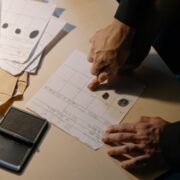
The Expansion of Biometric Identification
Fingerprints have remained the cornerstone of biometric identification, but their application has expanded to encompass other modalities such as palm prints, facial recognition, and iris scans. The FBI’s Next Generation Identification (NGI) system, introduced in the 21st century, exemplifies this multi-modal approach, combining fingerprint, palm print, face, and iris recognition capabilities to enhance identification accuracy and efficiency.
The integration of biometrics has also extended beyond law enforcement, with applications in areas such as border control, national identification programs, and access management systems. Initiatives like India’s Unique Identification (Aadhaar) project, which aims to provide reliable national identification documents to over a billion residents, showcase the vast potential of biometric technology in addressing identity challenges on a massive scale.
The Future of Fingerprint Identification
As we look to the future, the field of fingerprint identification continues to evolve, embracing new technologies and scientific advancements. The development of advanced algorithms and machine learning techniques holds the promise of enhancing the accuracy and reliability of fingerprint comparisons, potentially leading to quantitative likelihood ratios rather than subjective opinions.
Moreover, integrating fingerprint identification with other forensic disciplines, such as DNA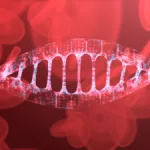 DNA, or Deoxyribonucleic Acid, is the genetic material found in cells, composed of a double helix structure. It serves as the genetic blueprint for all living organisms. Read Full Definition analysis and digital forensics, presents opportunities for more comprehensive and robust investigative processes. By combining multiple lines of evidence, law enforcement agencies can strengthen their ability to solve complex cases and deliver justice more effectively.
DNA, or Deoxyribonucleic Acid, is the genetic material found in cells, composed of a double helix structure. It serves as the genetic blueprint for all living organisms. Read Full Definition analysis and digital forensics, presents opportunities for more comprehensive and robust investigative processes. By combining multiple lines of evidence, law enforcement agencies can strengthen their ability to solve complex cases and deliver justice more effectively.
While the journey of fingerprint identification has been long and winding, its impact on society has been profound. From the ancient fascination with ridge patterns to the cutting-edge biometric systems of today, fingerprints have proven to be an enduring and invaluable tool for establishing identity, solving crimes, and upholding the principles of justice and security.
As we continue to explore the frontiers of this field, we must remain committed to scientific rigor, ethical practices, and a relentless pursuit of knowledge, ensuring that the legacy of fingerprint identification endures for generations to come.





